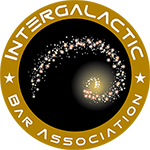December 2 – 69P/Taylor reaches its brightest
December 3 – C/2018 L2 (ATLAS) at perihelion
December 5 – Conjunction of the Moon and Mercury
December 7 – New Moon – The Moon will located on the same side of the Earth as the Sun and will not be visible in the night sky. This phase occurs at 07:20 UTC. This is the best time of the month to observe faint objects such as galaxies and star clusters because there is no moonlight to interfere; close approach of Mars and Neptune; conjunction of Mars and Neptune
December 8 – The Moon at perihelion; Asteroid 40 Harmonia at opposition
December 9 – Puppid–Velid meteor shower; Conjunction of the Moon and Saturn
December 11 – C/2018 L2 (ATLAS) reaches its brightest; Mercury at dichotomy
December 12 – The Moon at apogee; LMC is well placed
December 13, 14 – Geminids Meteor Shower – The Geminids is the king of the meteor showers. It is considered by many to be the best shower in the heavens, producing up to 120 multicolored meteors per hour at its peak. It is produced by debris left behind by an asteroid known as 3200 Phaethon, which was discovered in 1982. The shower runs annually from December 7-17. It peaks this year on the night of the 13th and morning of the 14th. The first quarter moon will set shortly after midnight leaving dark skies for what should be an excellent early morning show. Best viewing will be from a dark location after midnight. Meteors will radiate from= the constellation Gemini, but can appear anywhere in the sky; 46P/Wirtanen at perihelion; Conjunction of the Moon and Mars; Close approach of the Moon and Mars
December 15 – Mercury at Greatest Western Elongation – The planet Mercury reaches greatest western elongation of 21.3 degrees from the Sun. This is the best time to view Mercury since it will be at its highest point above the horizon in the morning sky. Look for the planet low in the eastern sky just before sunrise; Moon at First Quarter; NGC 1981 is well placed
December 16 – 46P/Wirtanen reaches its brightest; Asteroid 433 Eros at opposition
December 21 – December Solstice – The December solstice occurs at 22:23 UTC. The South Pole of the earth will be tilted toward the Sun, which will have reached its southernmost position in the sky and will be directly over the Tropic of Capricorn at 23.44 degrees south latitude. This is the first day of winter (winter solstice) in the Northern Hemisphere and the first day of summer (summer solstice) in the Southern Hemisphere; Conjunction of Jupiter and Mercury; The Moon at aphelion
December 22 – Full Moon – The Moon will be located on the opposite side of the Earth as the Sun and its face will be will be fully illuminated. This phase occurs at 17:49 UTC. This full moon was known by early Native American tribes as the Full Cold Moon because this is the time of year when the cold winter air settles in and the nights become long and dark. This moon has also been known as the Full Long Nights Moon and the Moon Before Yule; Ursids Meteor Shower – The Ursids is a minor meteor shower producing about 5-10 meteors per hour. It is produced by dust grains left behind by comet Tuttle, which was first discovered in 1790. The shower runs annually from December 17-25. It peaks this year on the the night of the 21st and morning of the 22nd. This year the glare from the full moon will hide all but the brightest meteors. If you are extremely patient, you might still be able to catch a few good ones. Best viewing will be just after midnight from a dark location far away from city lights. Meteors will radiate from the constellation Ursa Minor, but can appear anywhere in the sky
December 24 – The Moon at perigee
December 25 – Close approach of the Moon and M44
December 26 – Puppid–Velid meteor shower; Venus at perihelion
December 28 – NGC 2232 is well placed
December 29 – Conjunction of Venus and Ceres; Asteroid 6 Hebe at opposition; Moon at Last Quarter; NGC 2244 is well placed
